“The elegance of gravity die casting lies in its simplicity—using gravity to breathe life into metal, crafting parts with unparalleled accuracy and smooth finishes.”
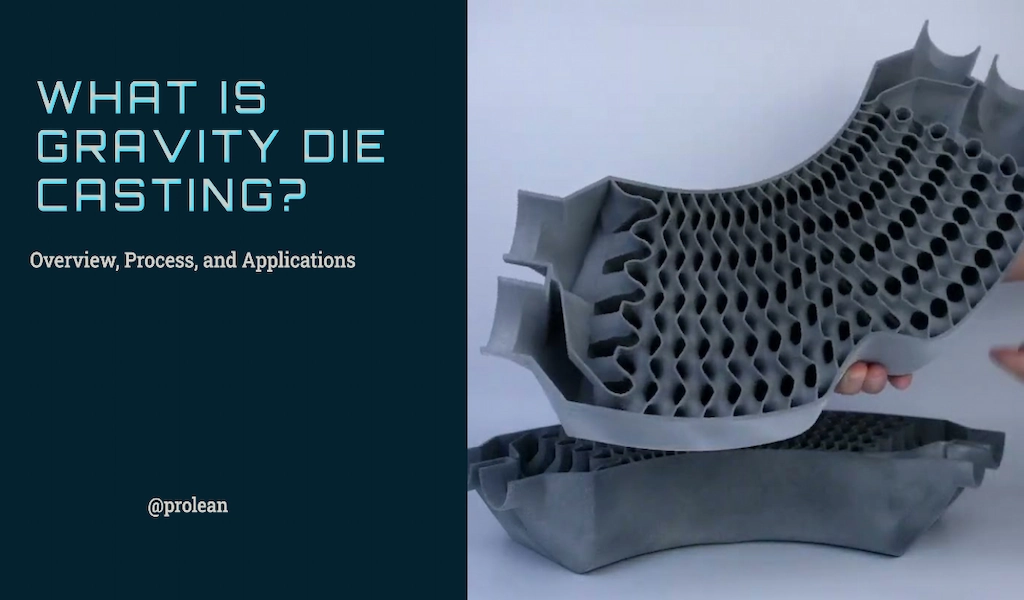
You can find different casting methods based on the pressure involved during the molten metal injection, gravity, low-pressure die casting, and high-pressure die casting. Among these, Gravity Die Casting (GDC) is one of the preferred methods for manufacturing metal parts. As the name suggests, it depends on gravity to pour molten metal into a permanent mold.
Furthermore, let’s discuss this casting technology in depth. We will cover casting overview, process, materials, pros & cons, applications, and more.
What is Gravity Die Casting?
Gravity die casting (GDC) is one of the popular types among several die casting methods, which utilizes gravity to pour molten metal into a permanent mold. It is known for producing metal parts with intricate shapes and relatively smooth surfaces.
Gravity die casting employs techniques like tilting the die to optimize molten metal flow and using sand cores to introduce voids or holes, enhancing the method’s versatility for detailed component production. This adaptability makes it a favored manufacturing process for creating parts with complex internal geometries and undercuts.

Gravity die casting
The gravity die-casting parts are suitable for metals like aluminum as they offer quality and production speed. Next, the machinery can range from fully automatic to manual casting. The choice depends on the complexity and production volume.
Related: What is Die Casting? Die Casting Process and Overview
Try Prolean Now!
Gravity Die Casting Process: How Does it Work?
Gravity die casting involves pouring molten metal directly from a ladle into a semi-permanent or permanent mold without external forces, relying solely on gravity to fill the mold cavity. This method is particularly effective for metals like aluminum and other non-ferrous alloys.
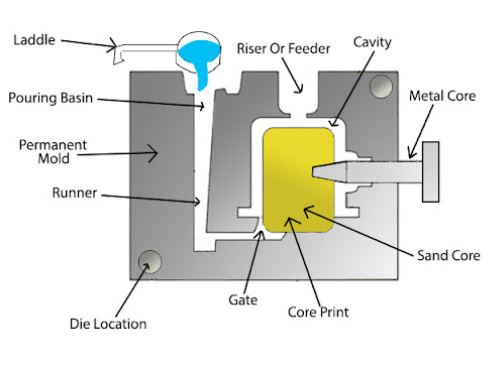
Gravity die-casting process
The use of gravity ensures a smooth flow of metal, reducing turbulence, oxidation, and foaming, which, in turn, minimizes porosity and inclusions. Here is the step-by-step elaboration of the Gravity Die Casting Process;
1. Preheat the Die and Coat the Mold Cavity
The first crucial step in gravity die casting involves preheating the die to a specific temperature and applying a release agent or coating to the die cavity. Meanwhile, preheating prevents cold spots and ensures uniform solidification. On the other hand, coating facilitates easy part removal and protects the die from erosion, especially in areas prone to turbulent flow.
2. Pour Molten Metal Into the Cavity
Once the die is adequately preheated and coated, molten metal is poured into the cavity through a runner system. The careful control of the pouring process is essential for filling the die with minimum turbulence, ensuring that the final casting exhibits the desired properties without internal defects. The gravity-assisted flow provides a smooth filling process.
3. Allow the Metal To Solidify
After pouring, the molten metal begins to cool and solidify. It starts from the parts of the mold that are cooler and progressing inward. This controlled solidification process is critical to creating parts that accurately reflect the mold’s shape and details. Subsequently, the time required for solidification varies depending on the metal used and the complexity of the casting.
4. Open the Die and Remove the Part
Following solidification, open the die to reveal the newly formed casting part. The earlier application of a release agent ensures easy removal from the mold without damaging its surface. So, this step marks the completion of the casting process, with the part now ready for any necessary post-processing.
5. Machine the Part if Needed
Finally, the casting may require machining to achieve the desired dimensions and surface finish or to add features. Techniques like CNC Machining can accurately remove excess material from areas such as the parting line or meet tight tolerance requirements. Basically, this post-casting process allows for the customization and refinement of the casting to suit specific application needs.
What are the Gravity Die Casting Materials?
Gravity die casting is a versatile manufacturing process compatible with various metals. The materials commonly cast in these molds include aluminum alloys, magnesium, cast iron, copper alloys, and zinc. Each of these metals brings distinct advantages to the casting process.
1. Aluminum Alloys
They are the most favored materials for gravity die casting. Their low melting point, excellent fluidity, and favorable mechanical properties post-casting make them ideal for diverse products. Their adaptability across industries underscores aluminum’s dominance in gravity die casting, from automotive to consumer goods.
2. Magnesium
Magnesium alloys are known for their low density and high strength-to-weight ratio. They are particularly well-suited for applications where reducing weight is crucial, such as in the aerospace and automotive industries. Magnesium’s excellent machinability further enhances its appeal. However, casting magnesium requires stringent safety measures due to its flammability.
3. Cast Irons
Though less common in gravity die casting than aluminum or magnesium, cast irons are chosen for their superior wear, heat, and vibration resistance. These properties make cast iron materials suitable for parts that need to withstand harsh conditions, such as industrial machinery components.
4. Copper Alloys
This material provides exceptional electrical and thermal conductivity. Parts requiring these properties, including electrical components and heat exchangers, benefit from copper’s performance.
5. Zinc Alloys
Zinc and its alloys stand out for their low melting points and excellent fluidity, making them ideal for producing intricately detailed parts. Zinc’s natural surface finish and ability to reproduce mold details precisely are particularly beneficial for decorative hardware, automotive components, and electronic devices.
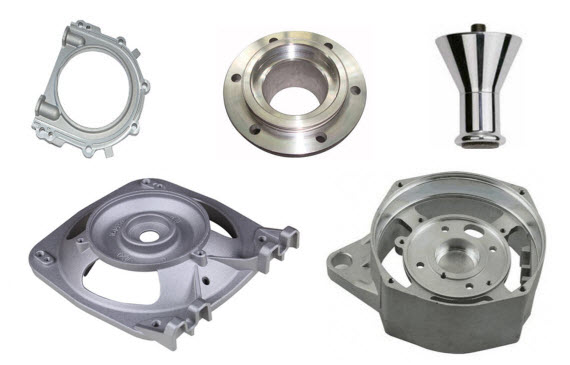
Zinc gravity die-casting parts
Aluminium Gravity Die Casting
Unlike other casting methods that employ external forces to fill the mold, this process relies solely on gravity to guide the aluminum into every intricacy of the mold. As a result, it can ensure detailed and consistent results. The molds, or dies, used in this process are reusable, making it an economical choice for medium to high-volume production runs.
The common aluminum alloys used in gravity die-casting are;
- A356 (AlSi7Mg0.3): Excellent castability, weldability, and corrosion resistance, suitable for automotive and aerospace applications.
- A380 (AlSi8Cu3Fe): It is known for its good mechanical properties.
- LM6 (Al-Si12): This alloy offers excellent corrosion resistance and ductility. It is perfect for parts exposed to harsh environments.
- AlSi10Mg: This combines high strength, good thermal properties, and corrosion resistance.
Furthermore, the versatility of aluminum gravity die casting allows it to serve a broad spectrum of industries. Some applications include automotive gearbox cases, aerospace parts, electronic enclosures, and surgical instruments. However, aluminum die casting manufacturers consider mold design, temperature control, alloy selection, and post-processing requirements to leverage aluminum gravity die casting.
Click here to download: The Details of Gravity Die-casting Process
Try Prolean Now!
Low Pressure vs High Pressure vs Gravity Die Casting: Key Differences
Die-casting processes vary significantly in how molten metal is introduced into the mold, each with unique benefits tailored to specific application needs. First, low-pressure die casting involves gently pushing molten metal into the mold using low pressure. It is ideal for producing high-quality parts with minimal porosity. In contrast, high-pressure die casting injects molten metal into the mold under high pressure, significantly reducing casting times. This type is a wise option for mass production of small to medium-sized parts.
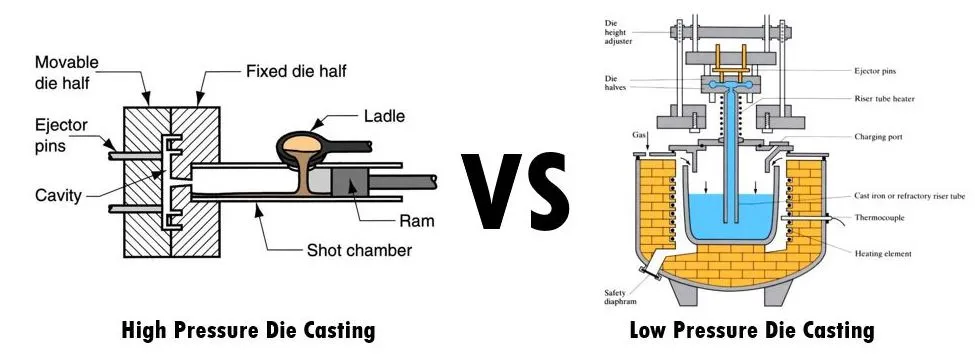
Compared to low and high-pressure injection, gravity die casting relies on gravity to fill the mold, favoring the production of parts with excellent dimensional accuracy and surface finish without high pressure.
Table: Comparison of Low Pressure, High Pressure, and Gravity Die Casting.
| Feature | Low-Pressure Die Casting | High-Pressure Die Casting | Gravity Die Casting |
| Pressure Used | Low pressure to fill the mold | High pressure for rapid mold filling | Gravity alone fills the mold |
| Part Quality | High-quality with minimal porosity | Good quality, but may have higher porosity | Excellent dimensional accuracy and surface finish |
| Complexity | Can produce complex shapes | Suitable for complex, thin-walled designs | Good for complex shapes with fewer undercuts |
| Materials | Aluminum and other non-ferrous metals | Mainly non-ferrous metals | Primarily aluminum and its alloys |
What are the Gravity Die Casting Applications?
Its ability to create components with high dimensional accuracy and excellent surface finish makes it a preferred choice across industries. The process is particularly beneficial for medium to large production runs of parts that are too complex for sand casting but do not require extreme pressures.
Here is the list of Die die-casting industries or those who leverage this technology;
- Automotive Industry
In the automotive sector, gravity die casting is utilized to manufacture critical components such as engine pistons, blocks, cylinder heads, brake calipers, and knuckles. These parts benefit from the process’s ability to produce durable, heat-resistant items that can withstand the stresses of automotive operation.
- Lighting Industry
The lighting industry relies on gravity die casting for creating parts like LED light housings and base materials. Next, the aesthetic appeal of gravity die-cast parts supports the design of visually appealing lighting fixtures.
- Kitchenware
Kitchen components such as pots, pans, and utensils are made using gravity die-casting. The process allows for kitchen tools that are functional but also durable and resistant to corrosion.
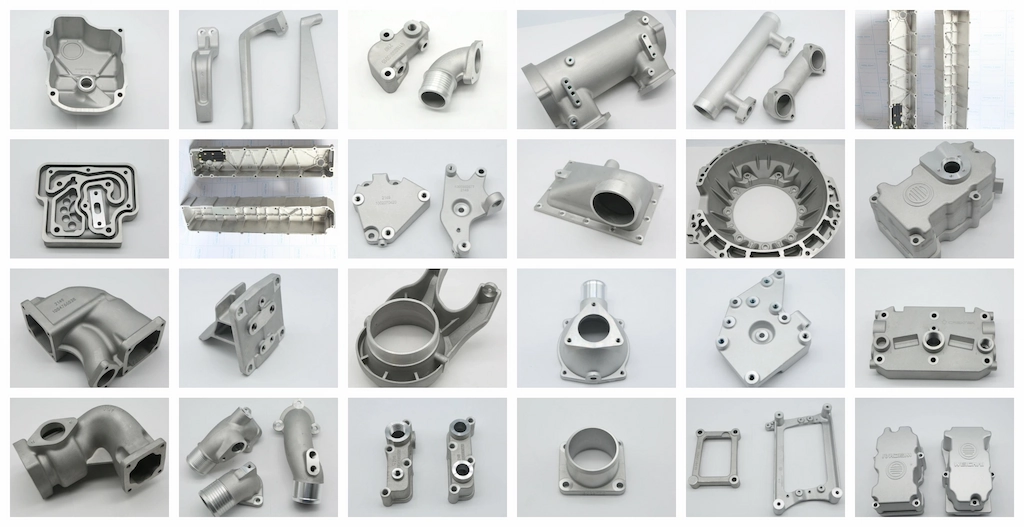
Gravity die casting applications
- Electronics and Telecommunications
Gravity Dies Casting manufactures enclosures, chassis, and heat sinks for electronic devices. The electromagnetic shielding properties of aluminum and its ability to dissipate heat effectively protect sensitive electronic components, ensuring device performance and durability.
- Medical Equipment
Gravity die casting contributes to the medical industry by producing equipment parts and surgical tools. The process’s capability to achieve tight tolerances and smooth finishes is critical for medical devices requiring precision and ease of sterilization.
- Aerospace Components
The aerospace industry leverages gravity die casting for lightweight and high-strength aluminum parts. It can make components such as housings, levers, and fittings.
Pros and Cons of Gravity Die Casting
This casting process is particularly advantageous when creating parts in substantial volumes. It is more cost-efficient than pressure casting at lower quantities. Consequently, GDC aluminum casting gravity ensures consistent quality across parts, significantly reducing the occurrence of scrap by minimizing casting defects and porosity.
Advantages of Gravity Die Casting
- Generates High-Quality Castings: Produces non-ferrous castings with a smooth surface finish and excellent dimensional accuracy, using durable steel molds for consistent quality over time.
- Cost-Efficient Production: Although the initial investment is high, lower per-part die casting costs in high-volume production.
- Lower Scrap and Defects: Results in less scrap than other casting methods because it creates parts with minimal porosity and defects.
- Material Versatility: GDC can work with a wide array of non-ferrous materials. So, it provides flexibility in product design and application.
- Consistent Quality: The permanent molds contribute to part-to-part dimensional stability, ensuring uniform quality across production runs.
- Economical for Medium Volumes: Ideal for producing quantities ranging from 250 to 50,000.
Disadvantages of Gravity Die Casting
- It imposes restrictions on design flexibility due to the reliance on gravity for metal flow, difficulty in thin walls, and intricate geometries.
- The Gravity die-casting machine requires a moderate to high investment in tooling and equipment.
- They are primarily used for casting non-ferrous metals, restricting their application to ferrous material casting.
Try Prolean Now!
We Cast Your Aluminum and Zinc Parts with Gravity Die Casting
Achieving quality gravity die-casting parts hinges on several crucial factors, including precise mold design, accurate temperature control, and raw material quality. Prolean excels in these areas, boasting advanced technology and extensive expertise in gravity die casting and other casting services.
Our facility has advanced casting machinery and skilled technicians for superior aluminum die casting and zinc die-casting services. Subsequently, rigorous quality control measures ensure that your casting meets high standards for dimensional accuracy and surface finish, making us a trusted partner in gravity die casting.
Choosing Prolean for your gravity die casting needs means opting for reliability, efficiency, and excellence. We offer customizable solutions tailored to your specific requirements, whether you’re in the automotive, aerospace, or consumer electronics industry. If you need die casting services, upload your design to our platform. Our team will review your specifications and provide a detailed quote and consultation.
Read more: Revolutionizing Die Casting with Xiaomi’s Super Large Die Casting Technology
Summing Up
Overall, Gravity Die Casting emerges as a formidable manufacturing technique, adept at handling different metals to produce parts that are not only structurally sound but also aesthetically pleasing. It can cast components with complex geometries and undercuts. Therefore, it is an invaluable asset in the manufacturing sector.
FAQs
What materials can be used in gravity die casting?
Aluminum alloys, magnesium, cast iron, copper, and zinc are commonly used in gravity die casting.
Why is gravity die casting preferred for aluminum parts?
Due to aluminum’s low melting point, excellent fluidity, and favorable mechanical properties, GDC aluminum casting ensures high-quality, detailed components efficiently and cost-effectively.
Can gravity die casting produce complex parts?
Yes, gravity die casting can produce complex parts by using techniques like tilting the die and using sand cores to introduce voids or holes.
What are the limitations of gravity die casting?
While offering numerous advantages, gravity die casting requires significant initial investment in tooling and equipment and may impose restrictions on design flexibility due to its reliance on gravity.
Resources
- Bonollo, F., Urban, J., Bonatto, B. M., & Botter, M. (2005, June). Gravity and Low pressure die casting of aluminum alloys: A technical and economical benchmark. ResearchGate. https://www.researchgate.net/publication/228517366_Gravity_and_Low_pressure_die_casting_of_aluminium_alloys_A_technical_and_economical_benchmark
- Aneesh, T., Pawan, K., & Gupta, M. et al. (2022). Exploring casting defects of AA7075 alloy in the gravity die casting simulation of an IC engine block. Journal of Process Mechanical Engineering. https://journals.sagepub.com/doi/abs/10.1177/09544089211073296

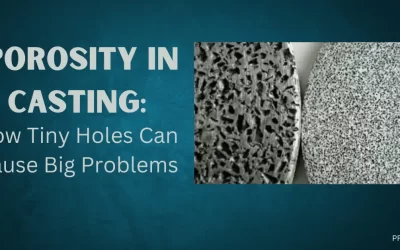
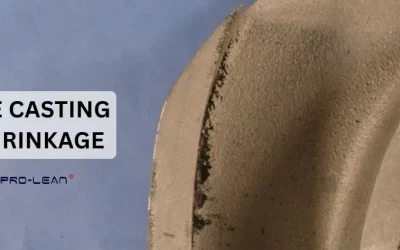
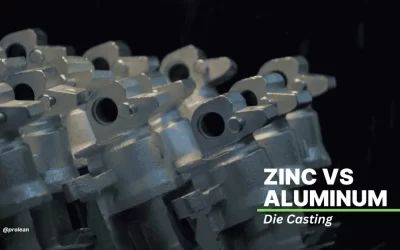
Great explaination on gravity die casting. It is great option for identical parts
I understand the concept , but can you suggest which is best for complex geometries ( I have a undercut in my design) ? Gravity or high-pressure?
Thanks Koetzer! For complex geometries with features like undercuts, high-pressure die casting is generally more suitable than gravity die casting. High-pressure die casting allows for better material flow into intricate areas, ensuring that details like undercuts are accurately formed. Additionally, high-pressure processes offer faster solidification, which can result in finer surface finishes and improved dimensional accuracy. Gravity die casting, while simpler and cost-effective for basic shapes, may struggle with filling complex molds completely, especially for deep undercuts. If high precision and detailed geometry are priorities in your design, high-pressure die casting is the better option to achieve these features effectively.